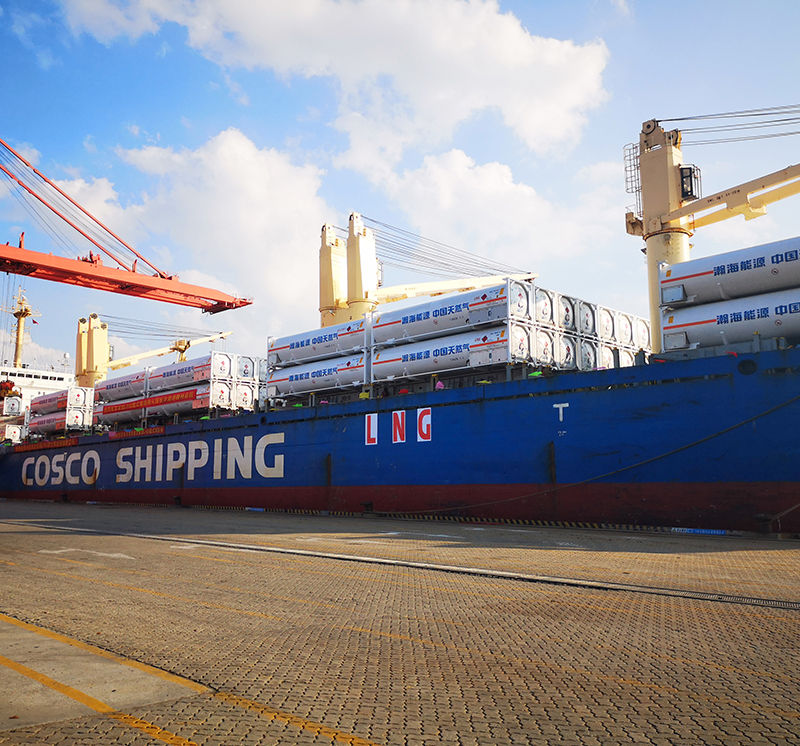Liquefied Natural Gas (LNG) has emerged as a significant player in the global energy market, providing a cleaner and more versatile fuel source. The expansion of LNG infrastructure, including the use of LNG tank containers, has played a pivotal role in meeting the growing demand for LNG. This article explores how LNG tank containers contribute to the expansion of LNG infrastructure, fueling global energy markets.
Flexibility in LNG Distribution:
LNG tank containers offer unparalleled flexibility in the distribution of LNG. Unlike traditional pipeline infrastructure, tank containers enable LNG to be transported to areas without existing infrastructure or those located in remote and off-grid regions. This flexibility opens up new markets and facilitates the diversification of LNG supply sources, supporting the growth of global energy markets.

Overcoming Infrastructure Limitations:
Expanding traditional LNG infrastructure can be costly and time-consuming. LNG tank containers provide a cost-effective solution to overcome infrastructure limitations. They offer a mobile and scalable option for LNG storage and transportation, allowing for quick deployment and adaptation to changing demand patterns. This flexibility reduces the reliance on fixed infrastructure, enabling the expansion of LNG markets to reach a wider range of customers.
Market Penetration in Developing Countries:
Many developing countries lack extensive pipeline networks for natural gas distribution. LNG tank containers present a viable solution to bridge this gap and bring LNG to these markets. By utilizing tank containers, LNG can be easily transported and distributed to areas with growing energy needs, promoting economic development and reducing dependence on more polluting fuel sources.
Small-Scale LNG Applications:
LNG tank containers are instrumental in the growth of small-scale LNG applications. These containers facilitate the transportation and storage of smaller LNG volumes, making it feasible to supply LNG to industries with lower energy requirements, such as power generation plants, manufacturing facilities, and remote communities. The expansion of small-scale LNG applications opens up new market segments, contributing to the overall growth of global energy markets.
Enabling LNG as a Transportation Fuel:
The use of LNG as a cleaner alternative in transportation is gaining momentum. LNG tank containers play a crucial role in supporting the infrastructure for LNG as a transportation fuel. These containers enable the efficient distribution of LNG to fueling stations, ports, and other transport hubs. With the expansion of LNG tank container infrastructure, LNG as a transportation fuel can help reduce greenhouse gas emissions and improve air quality in the shipping, trucking, and rail industries.
Fostering Global LNG Trade:
The deployment of LNG tank containers has facilitated the growth of global LNG trade. These containers enable LNG to be easily transported across borders, facilitating international trade and optimizing the utilization of LNG supply sources. By connecting LNG producers with consumers in different regions, LNG tank containers contribute to the globalization of LNG markets, diversifying energy supply options and enhancing energy security. Click here to learn more.
Conclusion:
LNG tank containers have become an integral part of the expansion of LNG infrastructure, fueling global energy markets. Their flexibility, scalability, and ability to overcome infrastructure limitations make them a vital component in reaching new markets, especially in developing countries and small-scale applications. With the growing demand for cleaner energy sources, the expansion of LNG infrastructure, supported by LNG tank containers, will continue to play a crucial role in meeting global energy needs and promoting a more sustainable energy future.
Previous: None.
Next: What is the role around integrated photovoltaic systems in renewable energy?
Copyright:@2020-2021
Comments Please sign in or sign up to post.
0
0 of 500 characters used